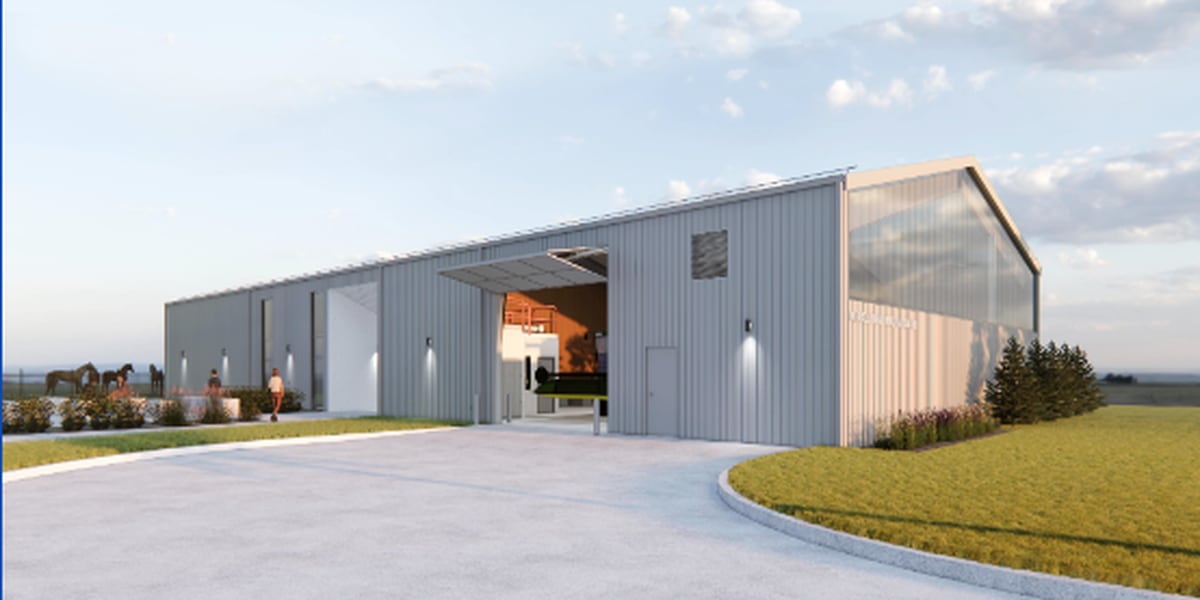
SPRINGFIELD, Mo. (KY3) – Missouri is home to 95,000 farms, ranking it second in the nation. Farms cover two-thirds of the state’s total land acreage and contribute $94 billion to Missouri’s economy.
So it’s no wonder Missouri State University continues to beef-up its agricultural education facilities with many of the buildings on the 125-acre Darr Agricultural Center campus next to Kansas Expressway having been added over the last 13 years.
The newest structure approved this week by the university’s governing board is the $4.1 million Agricultural Innovation Hub which will be an 8,500-square-foot building with a high bay shop space, tool storage, welding stations, woodworking area plus classrooms and collaboration areas.
It’s hoped to be open by the fall of 2024.
“It’s something we’ve had in the pipeline for quite some time but just recently came to fruition,” said MSU College of Agriculture Associate Professor Jim Hutter. “It will allow our students to get foundational knowledge and get into current trends, innovations and technology that’s used in the field of agriculture. And that area is moving really quick. It’s something different every day and students need to keep up with the technical side of agriculture in order to be able to sustain the industry.”
“Southwest Missouri is projected to lag behind as far as agricultural revenue in the next five years,” added MSU Agriculture Assistant Professor Matt Wommack. “And if we can get some of these new technologies in the hands of students we hope to get them ready for the workforce. One example is moving from large-scale sprayers to spray drones. Drone technology is becoming more and more affordable and a lot more versatile. Instead of having a sprayer go across the field you can use drones that cost a lot less. A new sprayer can cost you somewhere around $300,000 while the spray drones are pretty cost effective at $40-50,000. The drones have a variable-rate nozzle where you can adjust the pressure and use the vortex created by the blades to spread the dispersion out. Another example is equipment like tractors and combines are becoming more computer-based so having a basic understanding of where those systems are and what they do is going to be helpful. You may have a GPS system on your tractor to let you know exactly where you are so you cut down on your overlap in-betweens passes. That saves seed and nutrients and increases your yield, making your work more cost-efficient.”
The new Innovation Hub will join a campus that has grown quite a bit in recent years including the year-old Agricultural Academy for Springfield elementary-age students and the Bond Learning Center for college students that has classrooms with big enough doors and spaces so livestock can be brought in-and-out.
The latest addition to the campus just opened in August. The Small Animal Education Center has research and teaching labs for animal sciences. Students and faculty also work with dogs and cats from the Polk County Humane Society.
“The new facility has provided a lot of additional opportunities for our students,” said Animal Science School Director Lacy Sukovaty. “We were not previously able to house dogs and cats and we also now have the ability to do lab work. In our behavioral management class we learn about what’s normal for dog behavior and how they communicate. Then we get into some of the training and behavior issues. There are a lot of career opportunities within the pet industry like being a pet shelter manager, a pre-veterinary student or being involved in some of the pet product companies. There are a lot of concepts from these classes that tie into that type of career development.”
“This program has been really great for us,” said Polk County Humane Society Director Laura Persinger, whose shelter has over 70 dogs and cats apiece. “They help get the dogs trained so we know a little more about their personalities and how to match them better with their forever home. I love that they can spend more time training the dogs than we can because we only have six people on our staff and we have 74 dogs and about that many cats to keep up with.”
It’s those kind of interactive programs that the entire College of Agriculture at MSU is trying to offer to its 850 current students. And maybe more buildings will be popping up on campus in the future to meet those goals.
“Book knowledge is great,” Wommack said. “But having actual hands-on experience is critical and that’s why we’re expanding what we’re doing here.”
To report a correction or typo, please email [email protected]
Copyright 2023 KY3. All rights reserved.
